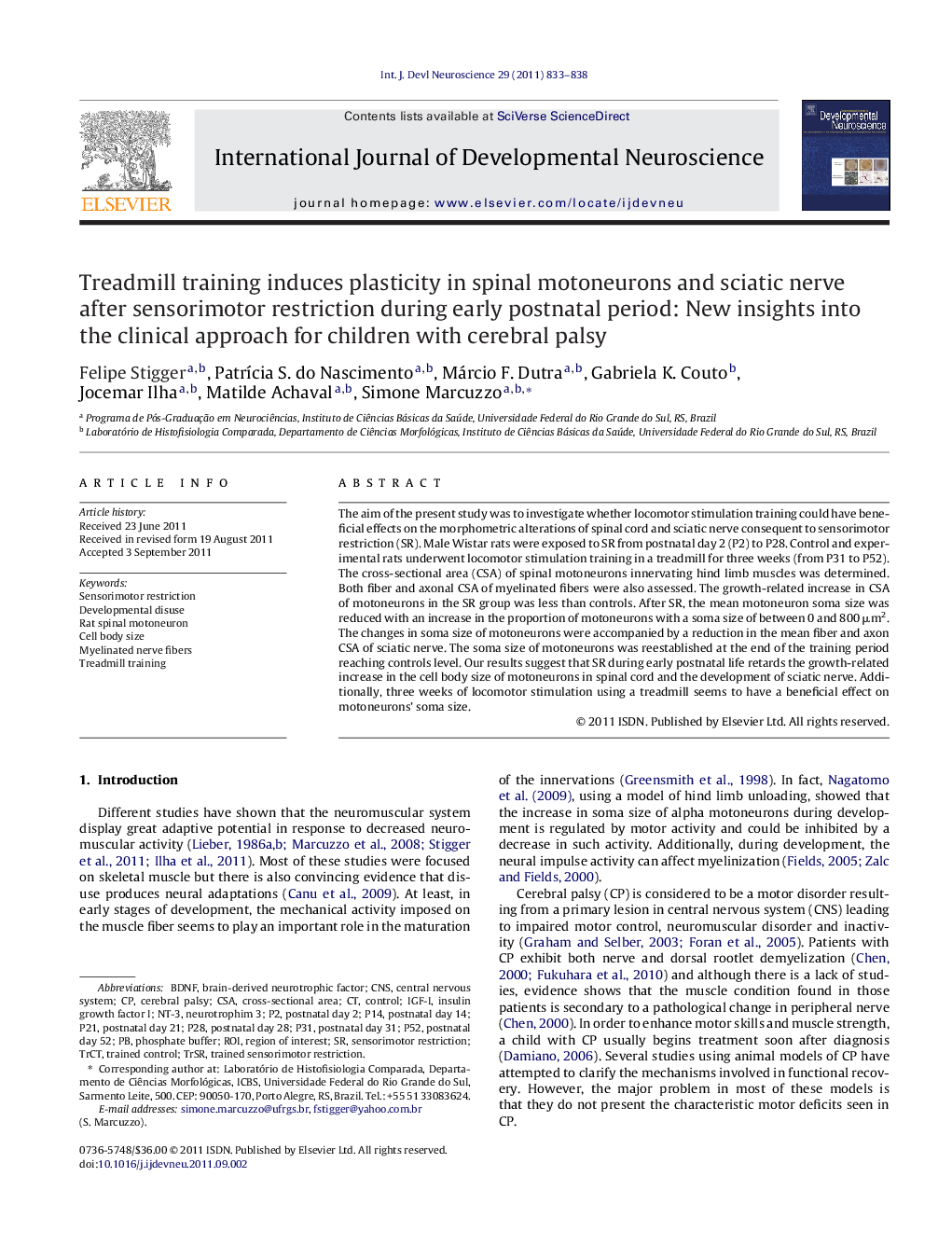| Article ID | Journal | Published Year | Pages | File Type |
|---|---|---|---|---|
| 2786314 | International Journal of Developmental Neuroscience | 2011 | 6 Pages |
The aim of the present study was to investigate whether locomotor stimulation training could have beneficial effects on the morphometric alterations of spinal cord and sciatic nerve consequent to sensorimotor restriction (SR). Male Wistar rats were exposed to SR from postnatal day 2 (P2) to P28. Control and experimental rats underwent locomotor stimulation training in a treadmill for three weeks (from P31 to P52). The cross-sectional area (CSA) of spinal motoneurons innervating hind limb muscles was determined. Both fiber and axonal CSA of myelinated fibers were also assessed. The growth-related increase in CSA of motoneurons in the SR group was less than controls. After SR, the mean motoneuron soma size was reduced with an increase in the proportion of motoneurons with a soma size of between 0 and 800 μm2. The changes in soma size of motoneurons were accompanied by a reduction in the mean fiber and axon CSA of sciatic nerve. The soma size of motoneurons was reestablished at the end of the training period reaching controls level. Our results suggest that SR during early postnatal life retards the growth-related increase in the cell body size of motoneurons in spinal cord and the development of sciatic nerve. Additionally, three weeks of locomotor stimulation using a treadmill seems to have a beneficial effect on motoneurons’ soma size.
► Maturation of motoneurons is activity-dependent at early stages of postnatal growth. ► Sensorimotor restriction (SR) promotes morphological alterations of sciatic nerve. ► Growth-related increase of spinal cord motoneurons is inhibited by SR. ► The effect of SR is reversible following treadmill training.
